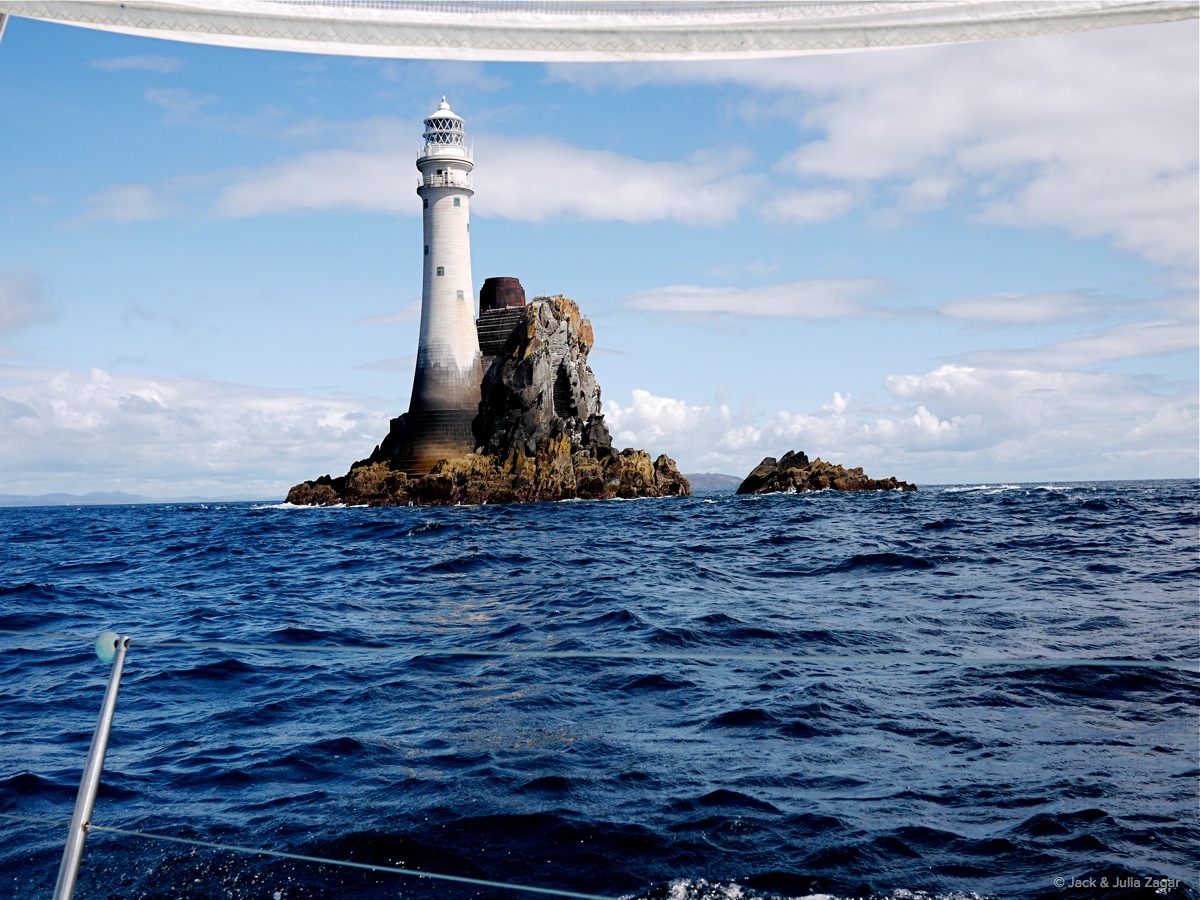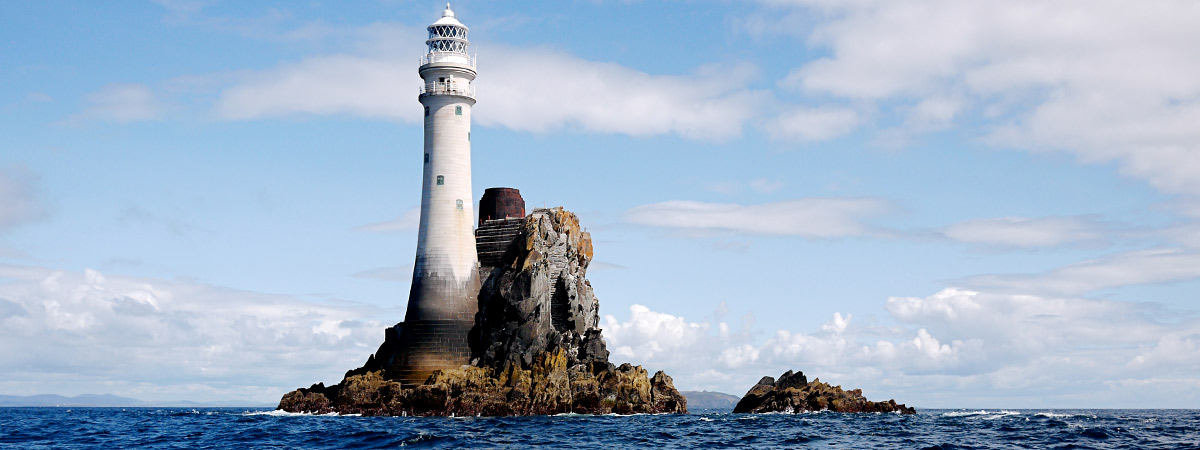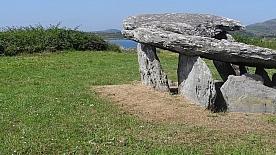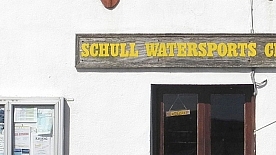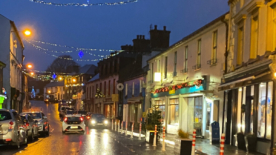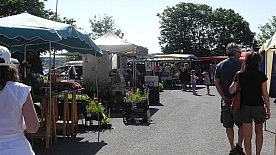In 1810 the only sea lights on the south-west corner of Ireland were situated, one on Loophead at the mouth of the Shannon River, another on almost the highest point of Cape Clear Island, and on the old head of Kinsale. The Fastnet Rock is approximately 9 miles from Schull and 4 and a half miles south-west of Clear Island. The tide rises 12 feet and currents round the rock at spring tides can attain a force of 3 knots. It is a very rare occurrence for the water to be sufficiently smooth to enable people to step out onto the rock, averaging about 12 tides a year.
The first Fastnet Lighthouse was a cast iron tower designed by George Halpin. It was started in 1849 and finished in 1853, and was built
because the old light on Clear Island was too far inside outlying danger and at so high an elevation that it was frequently obscured by fog. Cost, including shore dwellings, was £20,000. During a gale in Nov.1881 the glass was broken by the sea and one lens was damaged.
In 1891 it was decided that the old lighthouse was not powerful enough and because the Fastnet Rock was the principal landfall light on the south-west coast of Ireland, it should be made as powerful as circumstances would permit. So in 1896 preparations started for the
foundations of the new tower.
The 2nd lighthouse consists of 89 courses, 2,074 stones and weighs 4,633 tons. The tower was erected in sections of 6-8 courses at a time in the contractors yard in Cornwall and inspected before it was shipped out to Rock Island, Crookhaven Harbour, where there had been built an office, stores, carpenters and blacksmiths, shops and a barracks for workmen, dwellings for the lighthouse keeper and magazines for cotton powder, charges and detonators.
There was a specially built steamer for landing the materials on the Fastnet, named the ‘lerne’. At 126 ft. long, she carried 90 tons loaded. The masonry was completed in one week under 4 years. There is a central water tank, which holds 3,250 gallons of fresh water in the base of the lighthouse. Above this tank there are 8 rooms topped off by the optical apparatus and lantern.
The lantern had a single flash recurring every 5 seconds. The power of the beam at maximum intensity was equivalent to 750,000 candles
and it used 1.2 pints of oil per hour at maximum output. The cost of mantles, etc. was about £45 per annum and the ammunition for the fog
signal was on average £260 a year.
The lighthouse was completed on 16th July 1904 for approx. £90,000. There was a staff of 6 keepers; 4 at a time being present on the rock and 2 on shore. Reliefs were made each month if weather allowed, so they had 1 month on and 2 weeks off. The lighthouse keepers performed all the signalling and telegraphy duties.
Lloyds Insurance Company in London paid £200 per year expenses for these duties to be carried out. They kept 1 man watch by day; two were
on duty at night, one to attend the light and the other to signal and look out for fog. As soon as fog was seen, another man was called to work the fog signal. The annual cost of maintenance and repairs of the station was about £1,000, not including the traveling expenses of the keepers.
Since 1989 the lighthouse has been unmanned and now operates on an automatic basis. So now there are no watchful eyes on ‘Carrig Aonar’.
Carrig Aonar is the Irish name given to the Fastnet Rock, meaning ‘lonely rock’.
